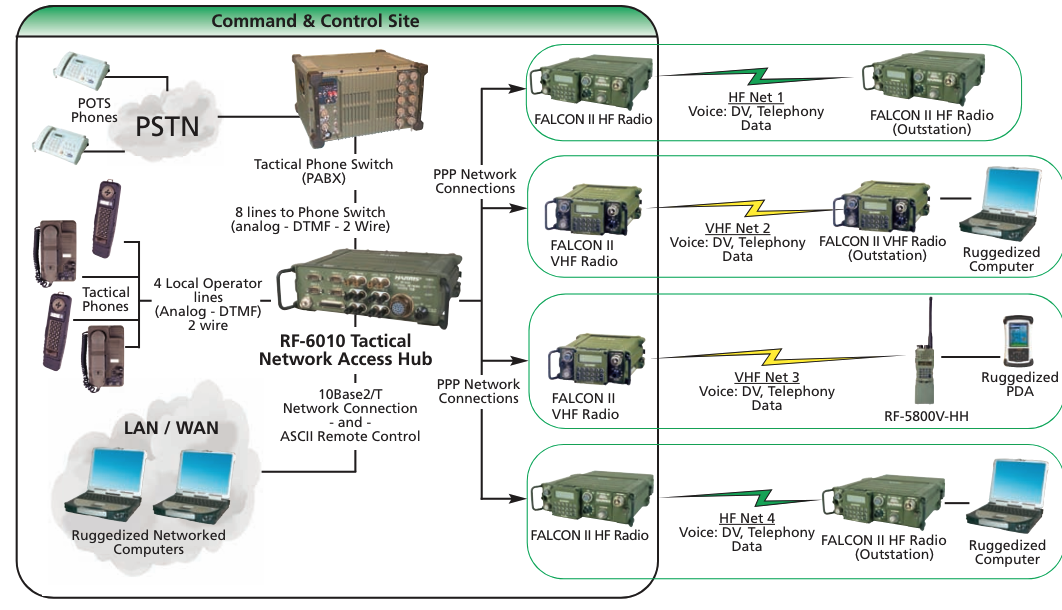Connecting a Tactical Manpack Radio to a Traditional Telephone Line: A Step-by-Step Guide
In the world of modern communications, there are situations where you might need to bridge tactical military communication systems with traditional civilian infrastructure. One such scenario is connecting a tactical manpack radio to a traditional telephone line. This can be particularly useful in emergency scenarios, field operations, or any situation where military and civilian communication systems need to interface seamlessly. Here’s a comprehensive guide to help you achieve this connection effectively.
Understanding the Basics
Tactical Manpack Radio: A portable, durable, and versatile radio used by military personnel for secure communications. These radios support various frequencies and modes, including VHF, UHF, and HF.
Traditional Telephone Line: A standard Public Switched Telephone Network (PSTN) line, which uses analog signals to transmit voice data.
Required Equipment
- Tactical Manpack Radio (e.g., Harris PRC-152, Thales MBITR)
- Telephone Interconnect Device: This device acts as an interface between the radio and the telephone line. Examples include the Motorola GAI-TRONICS and Harris RF-6010.
- Cables and Connectors: Ensure you have the appropriate cables to connect the radio to the interconnect device and the device to the telephone line.
- Power Supply: Ensure all devices have an adequate power supply.
Step-by-Step Connection Guide
Step 1: Set Up the Tactical Radio
- Power On: Ensure your tactical manpack radio is fully charged or connected to a power source.
- Frequency and Mode: Set the radio to the desired frequency and mode that will be used for communication. Ensure this frequency is clear and authorized for use.
- Audio Settings: Adjust the volume and squelch settings for optimal audio clarity.
Step 2: Connect the Telephone Interconnect Device
- Identify Ports: Locate the appropriate ports on the telephone interconnect device. Typically, these include an audio in/out port for the radio and a RJ11 or similar port for the telephone line.
- Connect to Radio: Using the appropriate cable, connect the audio out port of the radio to the audio in port on the interconnect device.
- Connect to Telephone Line: Connect the RJ11 cable from the interconnect device to the telephone line socket.
Step 3: Configure the Interconnect Device
- Power On: Ensure the interconnect device is powered on.
- Settings: Configure the device according to the manufacturer’s instructions. This often involves setting the correct impedance, gain levels, and any necessary signal conditioning.
- Test Line: Use the test function (if available) to ensure the telephone line is active and functioning correctly.
Step 4: Initiate Communication
- Dialing Out: To make a call from the tactical radio to a telephone, use the interconnect device to dial the desired telephone number. This usually involves pressing a sequence of buttons on the device.
- Answering Calls: To receive calls, ensure the interconnect device is set to automatically answer incoming calls. The radio should be in receive mode to capture the incoming audio.
Troubleshooting Tips
- Audio Clarity: If the audio is unclear, adjust the gain and volume settings on both the radio and the interconnect device.
- Connection Issues: Double-check all cable connections and ensure they are secure. Loose connections can lead to poor audio quality or dropped calls.
- Compatibility: Ensure the interconnect device is compatible with both your tactical radio and the telephone line. Refer to the manufacturer’s documentation for compatibility details.
- Interference: Be aware of potential interference from other electronic devices. Ensure the radio and interconnect device are placed in an area with minimal interference.
Conclusion
Connecting a tactical manpack radio to a traditional telephone line can significantly enhance communication capabilities in various scenarios. By following the steps outlined in this guide, you can ensure a reliable and effective connection, bridging the gap between military and civilian communication systems. Whether for emergency response, field operations, or any other critical situation, this setup can provide a vital link when it matters most.







Post Comment